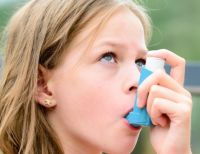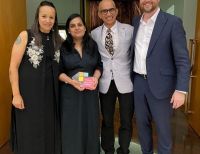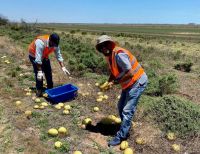06 April 2023
 New research evaluating the potential cost savings of a therapy for babies displaying early autism signs has predicted a three dollar return to Australia’s National Disability Insurance Scheme (NDIS) for every dollar invested in therapy.
New research evaluating the potential cost savings of a therapy for babies displaying early autism signs has predicted a three dollar return to Australia’s National Disability Insurance Scheme (NDIS) for every dollar invested in therapy.
Published in the prestigious JAMA Network Open, the health economic study drew on the results of a landmark multi-centre randomised clinical trial which reported the world’s first evidence that a therapy commenced in infancy (iBASIS-VIPP)* could reduce early developmental disability to the point where a childhood clinical autism diagnosis was two-thirds less likely.
Now, researchers from the University of South Australia (UniSA) and Telethon Kids Institute, in partnership with the University of Manchester, La Trobe University, Griffith University and the University of Western Australia, have used this clinical trial data to model downstream cost implications for children up to age 13.
Modelling downstream disability support costs to the NDIS system, they predicted that use of the iBASIS-VIPP therapy during infancy would return a net cost savings of $10,695 per child, representing a three-to-one return on investment by age 13.
Lead author, UniSA’s Professor Leonie Segal, Chair, Health Economics and Social Policy, says the estimated cost savings are conservative as they only covered support costs to the NDIS until a child turned 13, and did not consider cost savings to other systems (for example, health, education, parental employment).
“By investing in services early in life for babies showing early autism signs – and thereby reducing levels of disability – the study predicted a net cost savings of $10,695 per child by age 13 years,” Prof Segal, a health economist, says.
“The modelling also predicted that savings in support costs associated with disability would balance out therapy costs shortly after the child turned five – just four years after delivery of the therapy.
“The findings clearly argue the case that investing in early support for babies represents a good investment for the whole community.”
Telethon Kids Institute’s Prof Andrew Whitehouse – the Angela Wright Bennett Professor of Autism Research at Telethon Kids and the University of Western Australia and Director of CliniKids – says autism is not typically diagnosed until three years of age.
“However, therapies commencing during the first two years of life – when the initial signs of development difference are observed, and the brain is rapidly developing – can positively impact developmental outcomes in later childhood,” Prof Whitehouse says.
He says many services used the presence or absence of a diagnosis as a ‘trigger’ for funding and therapy, but this study reinforces the potential value of therapies prior to a diagnosis.
“Disability associated with autism has cost and quality of life implications for families and may result in extra government spending on areas such as health, education, disability services, and income support,” Prof Whitehouse says.
“Reducing disability associated with autism can relieve hardship to the individual, and in the process relieve costs to the individual, their family, and the broader systems that support them. At a time when NDIS sustainability is of great importance to everyone, these findings are very significant.”
Prof Segal says a challenge for health and disability systems globally is how to allocate finite funding to best support people with a disability, including autistic children and their families.
“Optimal resource allocation requires an understanding of the benefits versus costs of potential therapies, especially to inform at what age to provide supports,” she says.
“The study, together with the earlier work on which it builds, provides evidence that pre-emptive therapies are a feasible, effective and an efficient clinical pathway.”
Prof Whitehouse says given that in Australia more than a third of all participants in the NDIS have an autism diagnosis, the implications of these findings are enormous.
“I want to make it crystal clear that this is about finding the best use of funds to create the best outcomes for children,” he says.
“The discovery of therapies that reduce the disability experienced by children will often mean that that child requires fewer supports in later childhood. This is fantastic news for the child, their family and the systems that support kids and families.
“This study is about how to provide the right supports to kids and families at the right time and in the right amount. Understanding this is critical in helping to structure systems to support kids and families when they need it.”

Notes to Editors:
*iBASIS-VIPP is a video therapy that helps parents understand and adapt to their baby’s communication style to optimise social and communication development in babies aged 9-14 months.
The original clinical trial, led by Telethon Kids Institute’s Professor Andrew Whitehouse, identified babies with early signs of potential autism (reduced eye contact, imitation, or response to name), finding that a clinical diagnosis of autism at age three was only a third as likely in children who received iBASIS-VIPP compared to those who received treatment as usual.
…………………………………………………………………………………………………………………………….
Contacts for Interview:
UniSA: Prof Leonie Segal E: [email protected] M: +61 418 300 805 or via
Annabel Mansfield UniSA Media M: +61 479 182 489 or [email protected]
Telethon Kids – Prof Andrew Whitehouse – via Amanda Lewis, Communications Specialist, CliniKids T: +61 8 6319 1851 M: +61 421 117 561 E: [email protected]







